
Roots
There exists a quiet yearning, a whispered query beneath the surface of every textured strand, about its very nature. We often seek remedies for frizz, for dryness, for breakage, yet sometimes the answers lie not in the newest elixir, but in a more profound acquaintance with the hair itself. This intimate knowledge begins with porosity, a concept often spoken of in hushed tones, yet holding the key to unlocking the inherent brilliance of coily, kinky, and wavy hair. It is a fundamental truth, a silent language spoken by each individual fiber, guiding us toward practices that truly serve its delicate needs.
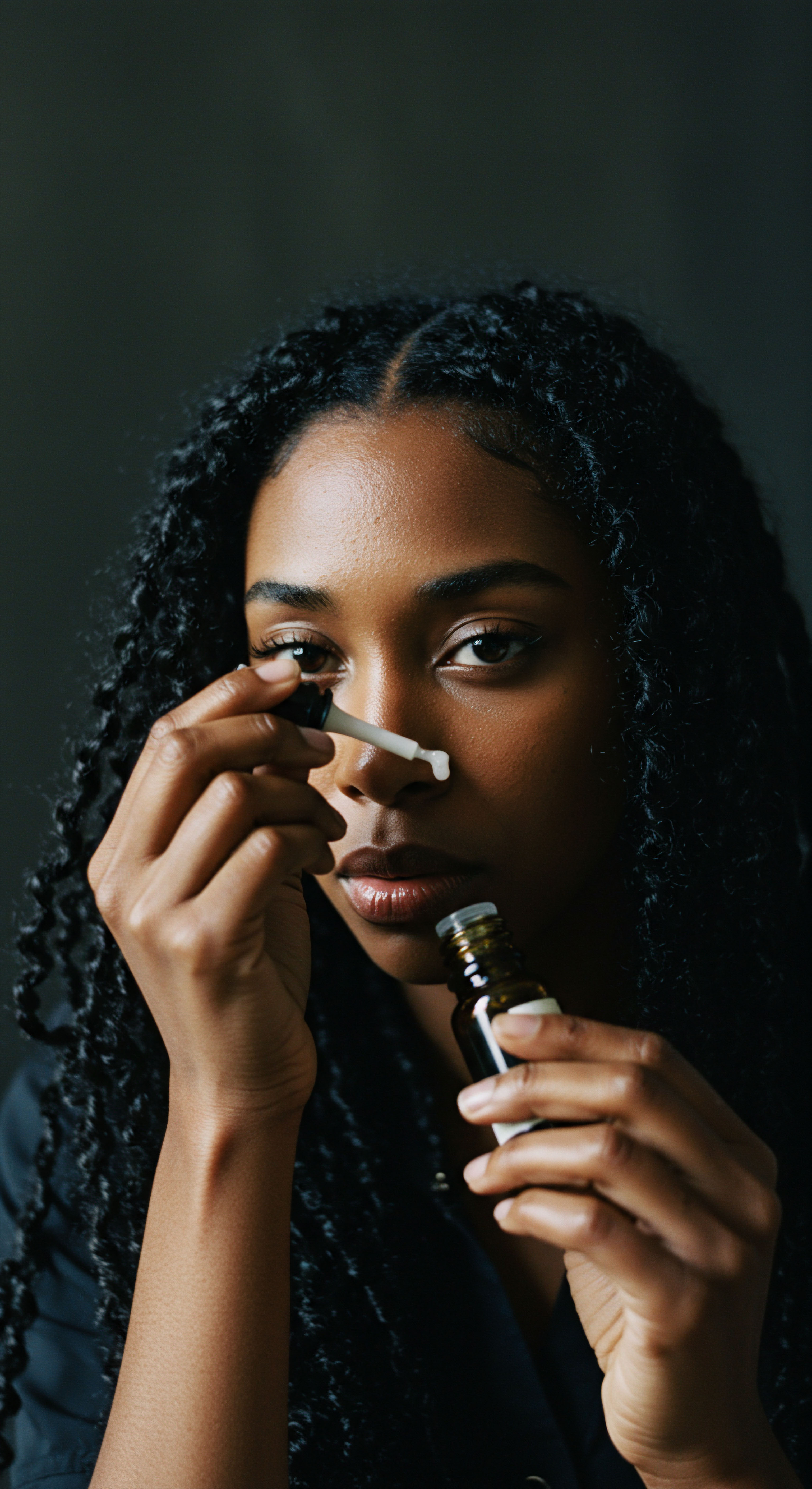
Understanding Hair’s Thirst
Hair porosity refers to the cuticle’s ability to absorb and retain moisture. Think of the hair strand as a miniature pinecone; its outer layer, the cuticle, consists of overlapping scales. When these scales lie flat, the hair possesses low porosity, meaning it resists moisture absorption but retains it well once inside. Conversely, when the scales are raised, the hair exhibits high porosity, readily absorbing water but struggling to hold onto it.
Medium porosity, often considered the ideal, finds a gentle balance between these two states. This isn’t a mere scientific classification; it is a lens through which we can perceive the unique hydration narrative of textured hair.
The structure of textured hair, with its unique bends and twists, naturally influences how these cuticle scales behave. The very curves of a coil create points of vulnerability where cuticles may lift more easily, or where product application becomes a nuanced art. Recognizing this inherent architectural distinction is the initial step toward truly bespoke care.
Hair porosity, the cuticle’s capacity for moisture absorption and retention, speaks the silent language of textured strands.

Why Porosity Matters for Textured Hair
For textured hair, the implications of porosity are particularly significant. The natural spirals and coils often mean that the hair’s own sebum, a natural conditioner, struggles to travel down the entire length of the strand, leaving ends more prone to dryness. When combined with varying porosity levels, this can lead to a spectrum of challenges.
A highly porous textured strand, for instance, might feel perpetually dry, even after deep conditioning, because moisture escapes as quickly as it enters. A low porosity strand, on the other hand, might resist conditioning treatments, leading to product buildup if not approached with thoughtful technique.
- Low Porosity Hair ❉ This hair type often appears shiny but feels dry. Products tend to sit on the surface, making it difficult for moisture to penetrate. It requires warmth and steam to open the cuticle for deep conditioning.
- Medium Porosity Hair ❉ This hair type typically responds well to most products and holds styles effectively. It is generally easier to manage and less prone to breakage or excessive dryness.
- High Porosity Hair ❉ This hair type often feels rough or frizzy, dries quickly, and is prone to tangling. It readily absorbs moisture but loses it just as fast, necessitating heavier products and sealing techniques.
Understanding this fundamental characteristic provides a compass, guiding us away from generic solutions and toward a routine that truly resonates with the hair’s deepest needs. It moves us beyond trial-and-error, toward a purposeful cultivation of strand health.
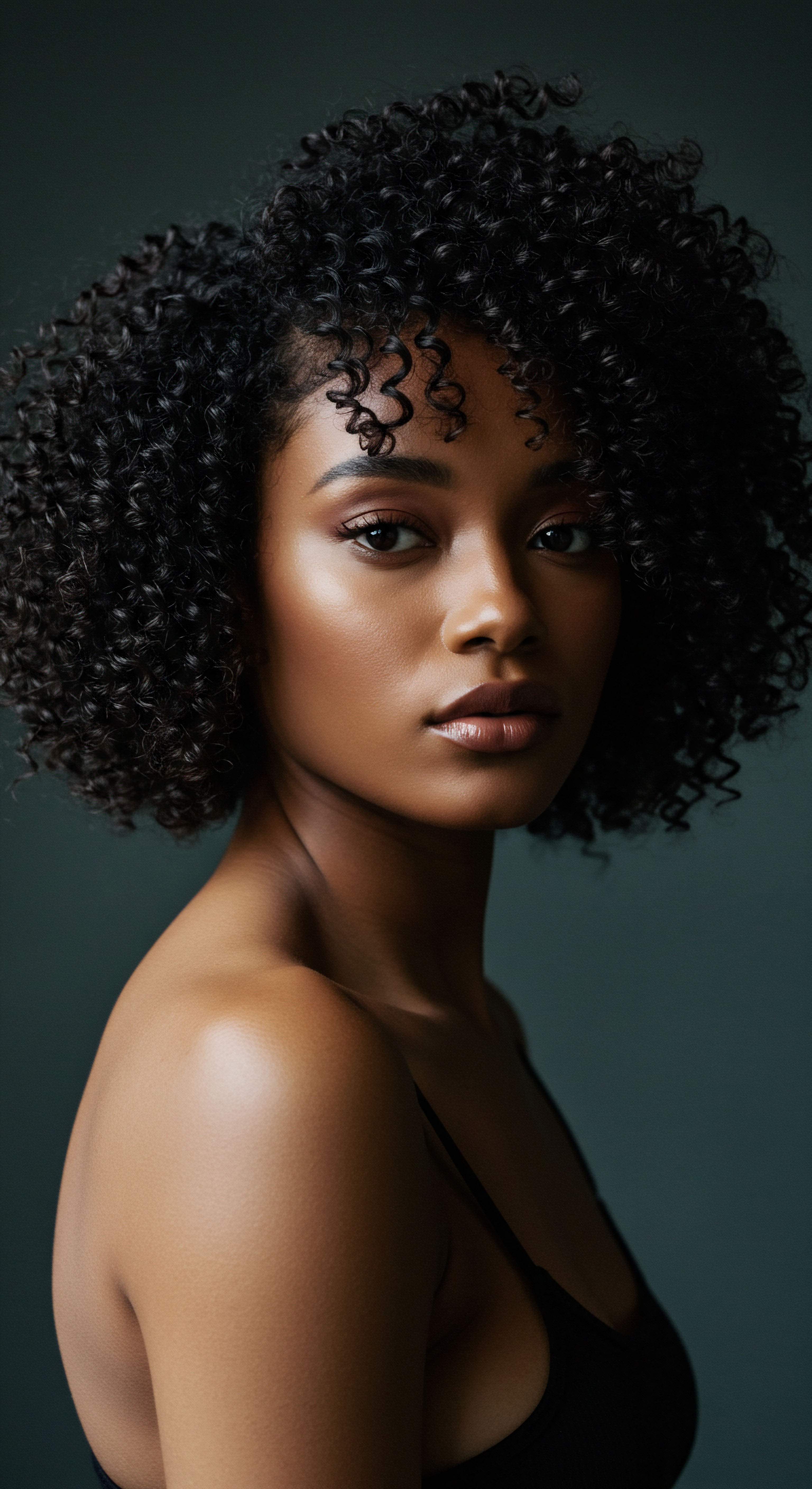
Ritual
Stepping beyond the realm of pure knowledge, we enter the space of daily practice, where the wisdom of porosity finds its tangible expression. This is where intention meets action, transforming mundane routines into a purposeful choreography of care. The daily washing, conditioning, and styling become less about habit and more about a thoughtful dialogue with each strand, guided by its unique thirst.

Tailoring Cleansing and Conditioning Practices
The journey toward radiant textured hair begins with the cleanse. For those with Low Porosity Hair, the goal is to gently encourage the cuticle to open without stripping the hair of its natural oils. Opting for lighter, sulfate-free shampoos or co-washes, followed by warm water rinses, can be beneficial.
The warmth assists in lifting the tightly bound cuticle layers, allowing subsequent conditioning treatments to penetrate more effectively. When conditioning, consider applying a gentle heat cap or steaming the hair to truly infuse moisture.
In contrast, High Porosity Hair requires a different approach. The open cuticles mean moisture can easily escape, so cleansing should be mild to preserve as much natural hydration as possible. Rich, creamy conditioners with humectants and emollients are vital to help draw moisture in and then seal it. Leave-in conditioners become non-negotiable allies, forming a protective layer that helps to keep precious water locked within the strand.

Styling for Lasting Hydration
Once cleansed and conditioned, styling choices further solidify the benefits of porosity-informed care. For low porosity strands, applying products to damp, not soaking wet, hair can prevent excessive product sitting on the surface. Lighter stylers, mousses, or gels that do not contain heavy butters or oils as primary ingredients can help avoid buildup. The focus remains on penetration, not coating.
Conversely, high porosity hair benefits immensely from the layering of products. The “LOC” (Liquid, Oil, Cream) or “LCO” (Liquid, Cream, Oil) method often proves highly effective. The liquid (water or leave-in) provides initial hydration, followed by an oil to help seal it in, and then a cream to provide further moisture and styling hold. This methodical application builds a barrier against moisture loss, keeping textured strands supple and defined throughout the day.
Daily care, guided by porosity knowledge, transforms routines into a thoughtful choreography of cleansing, conditioning, and styling.
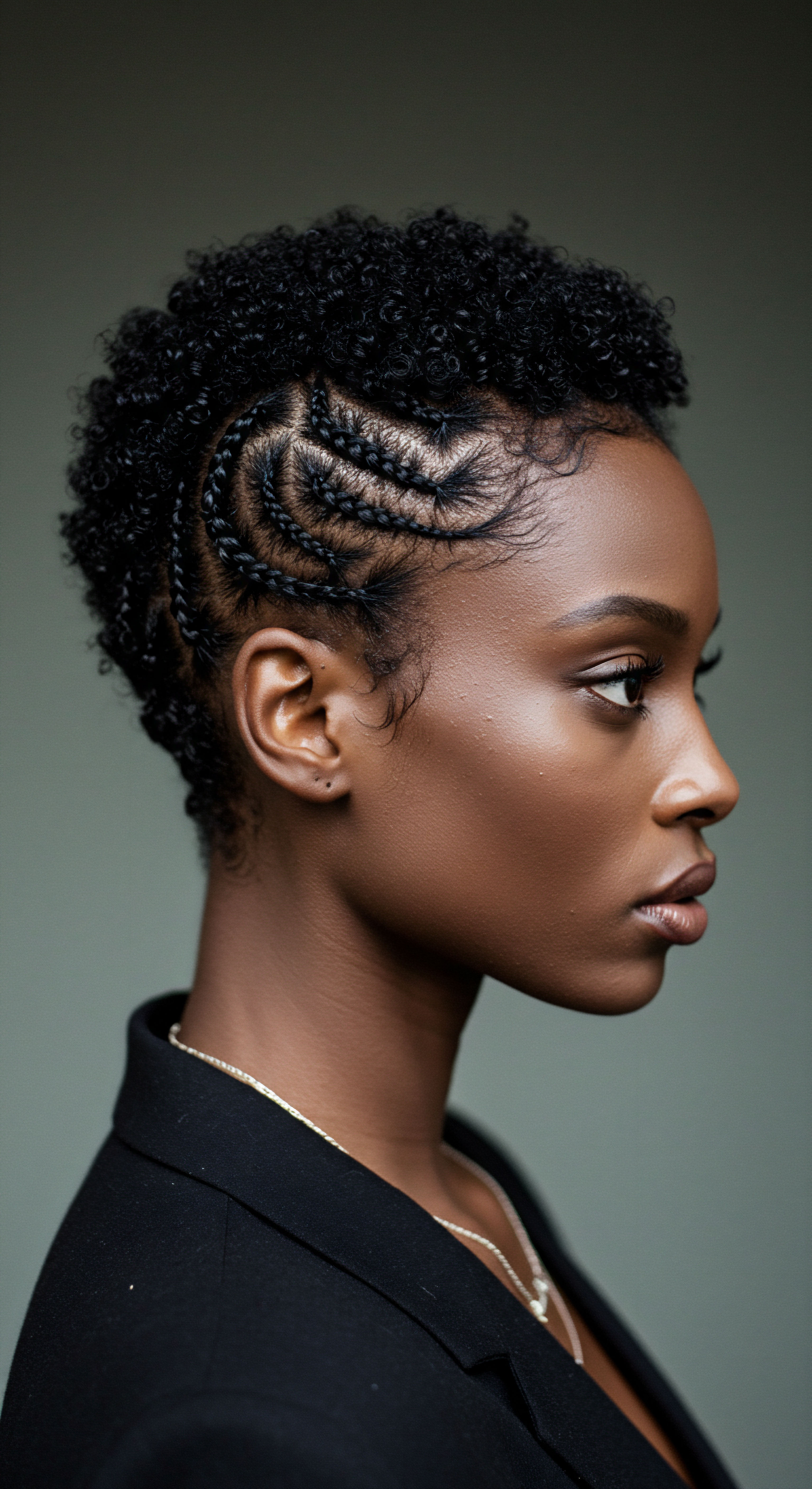
How Do Products Respond to Porosity Differences?
The very chemistry of hair products interacts uniquely with varying porosity levels. Consider a product designed for intense hydration. For low porosity hair, this might translate into an overwhelming sensation, leaving the hair feeling heavy or greasy because the product cannot readily pass through the tightly closed cuticle. The same product on high porosity hair, however, could be a savior, providing the much-needed emollients and humectants to replenish its thirsty nature.
This table provides a simplified guide to how product types might interact with different porosity levels ❉
| Porosity Level Low Porosity |
| Product Characteristics That Work Well Lightweight formulas, humectants, water-based, gentle cleansers, heat-activated conditioners. |
| Products to Approach with Caution Heavy butters, thick oils, protein-rich treatments (unless balanced). |
| Porosity Level Medium Porosity |
| Product Characteristics That Work Well Balanced formulas, moderate protein, versatile creams, nourishing oils. |
| Products to Approach with Caution Excessively heavy or overly light products. |
| Porosity Level High Porosity |
| Product Characteristics That Work Well Heavy creams, butters, oils, protein treatments, anti-humectants in humid climates, leave-ins. |
| Products to Approach with Caution Stripping shampoos, lightweight gels without sealing properties. |
| Porosity Level Selecting products based on porosity helps optimize absorption and retention. |
This understanding empowers us to select ingredients and formulations that truly align with the hair’s inherent receptiveness, rather than simply following trends or generic recommendations.
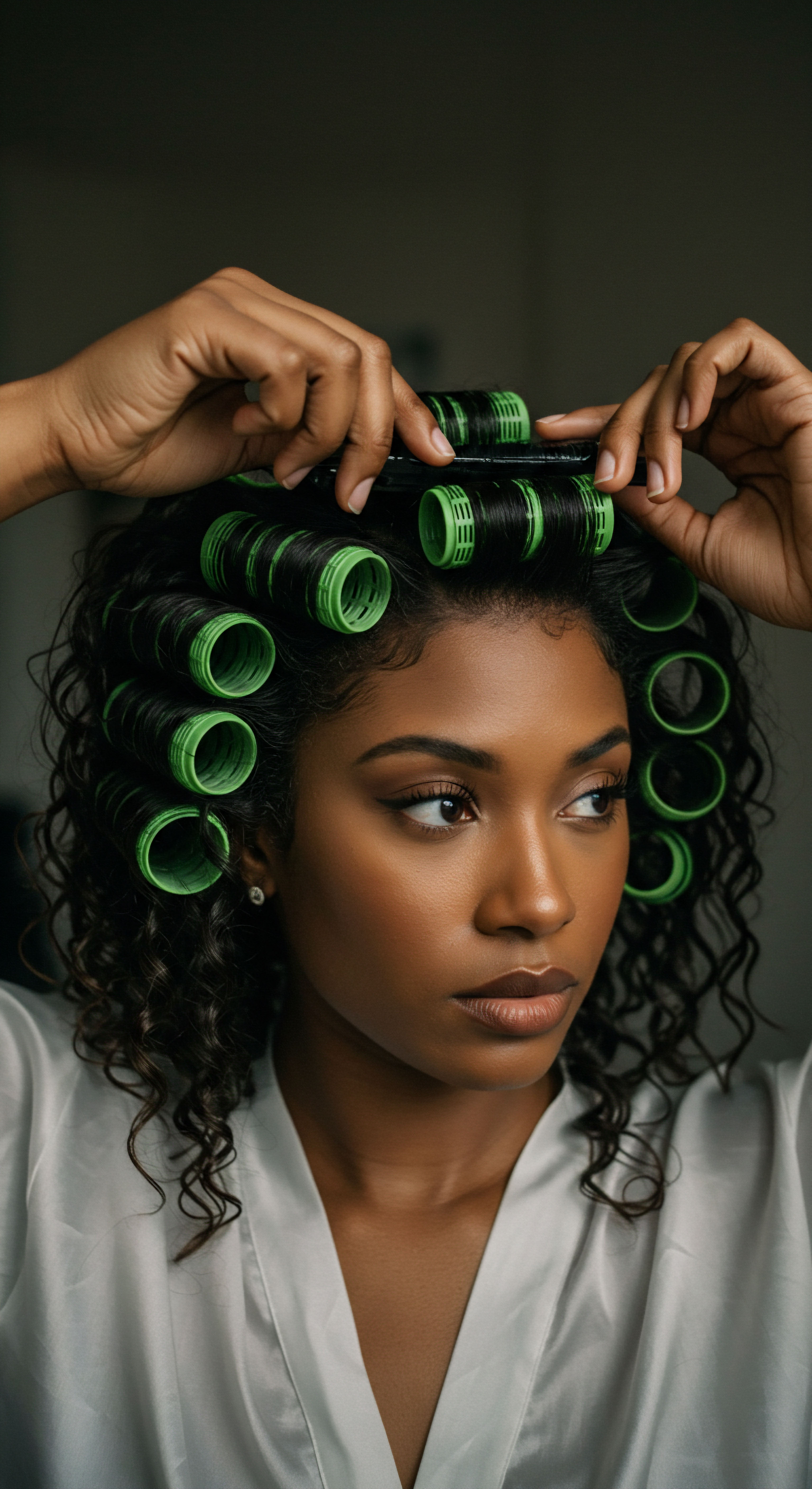
Relay
Moving beyond the immediate touch and feel of our strands, we find ourselves at a juncture where the intricate details of hair science intertwine with the rich tapestry of human experience. The question of porosity extends its reach into the very molecular architecture of the hair fiber, influencing its response to environmental stressors and the very rituals passed down through generations. This is where understanding transcends simple application, delving into the deeper currents that shape the textured hair journey.
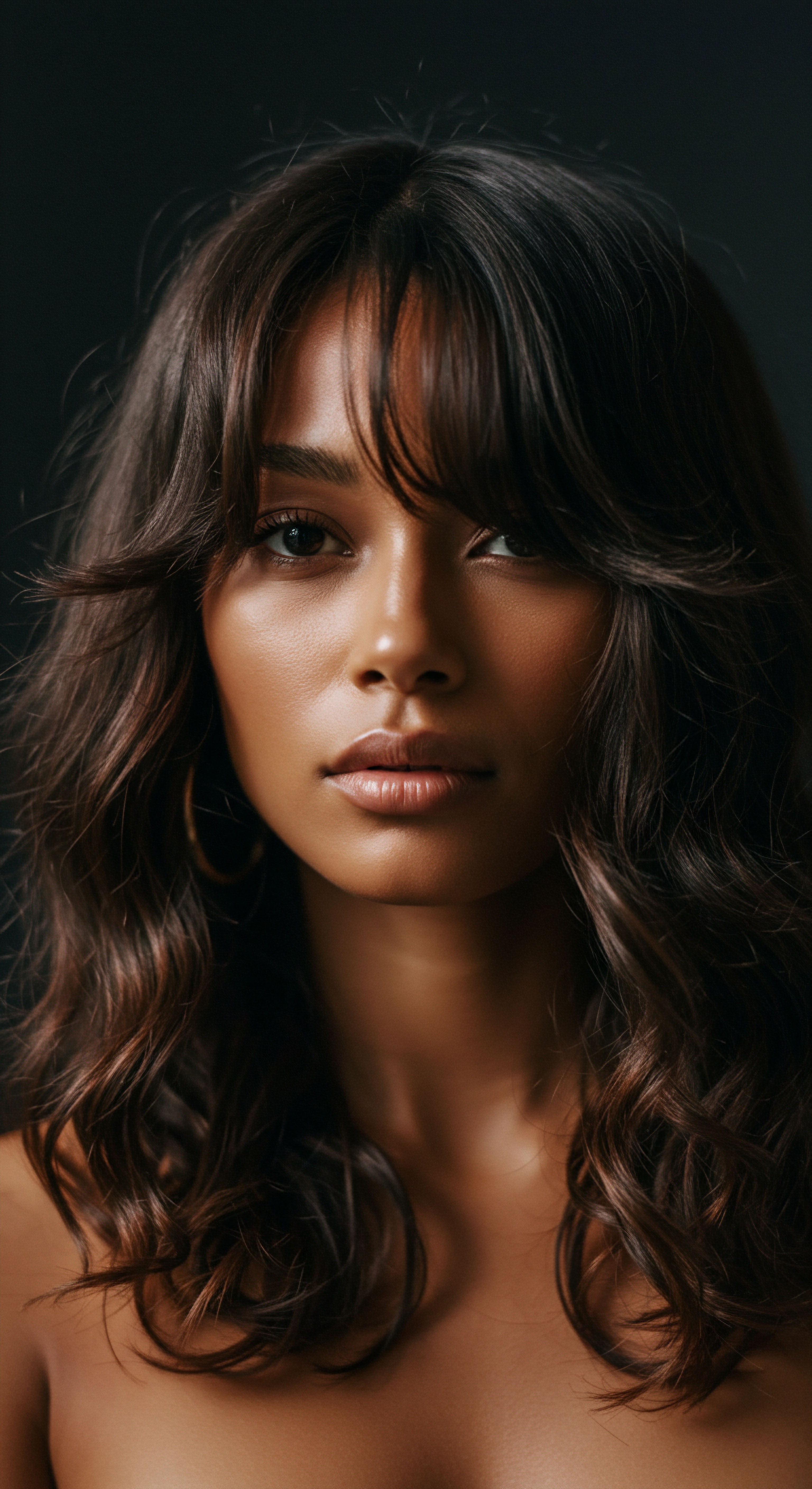
How Does Textured Hair’s Unique Structure Influence Porosity?
The elliptical cross-section and unique helical twisting of textured hair fibers are not merely aesthetic distinctions; they are biomechanical realities that profoundly affect porosity. Unlike straight hair, which typically has a round cross-section, the varied shapes of textured strands mean that the cuticle layers, while serving the same protective function, are distributed differently along the fiber. This can lead to areas where the cuticle is naturally more raised or prone to lifting, even in otherwise healthy hair. The very points where the hair bends and coils create microscopic stress points, making these areas more susceptible to mechanical damage from styling, which in turn elevates porosity.
Research has illuminated these inherent vulnerabilities. A review of African hair fiber characteristics points to its distinct structural attributes. For instance, African hair typically possesses fewer cuticle layers than Caucasian hair, and these layers are often thinner and more prone to lifting.
This structural predisposition means textured hair, even in its virgin state, may exhibit a higher natural porosity or be more susceptible to becoming highly porous through routine manipulation and environmental exposure. This underlying structural reality necessitates a proactive, rather than reactive, approach to porosity management.
The elliptical cross-section of textured hair creates unique stress points, making its cuticle more prone to lifting and higher porosity.
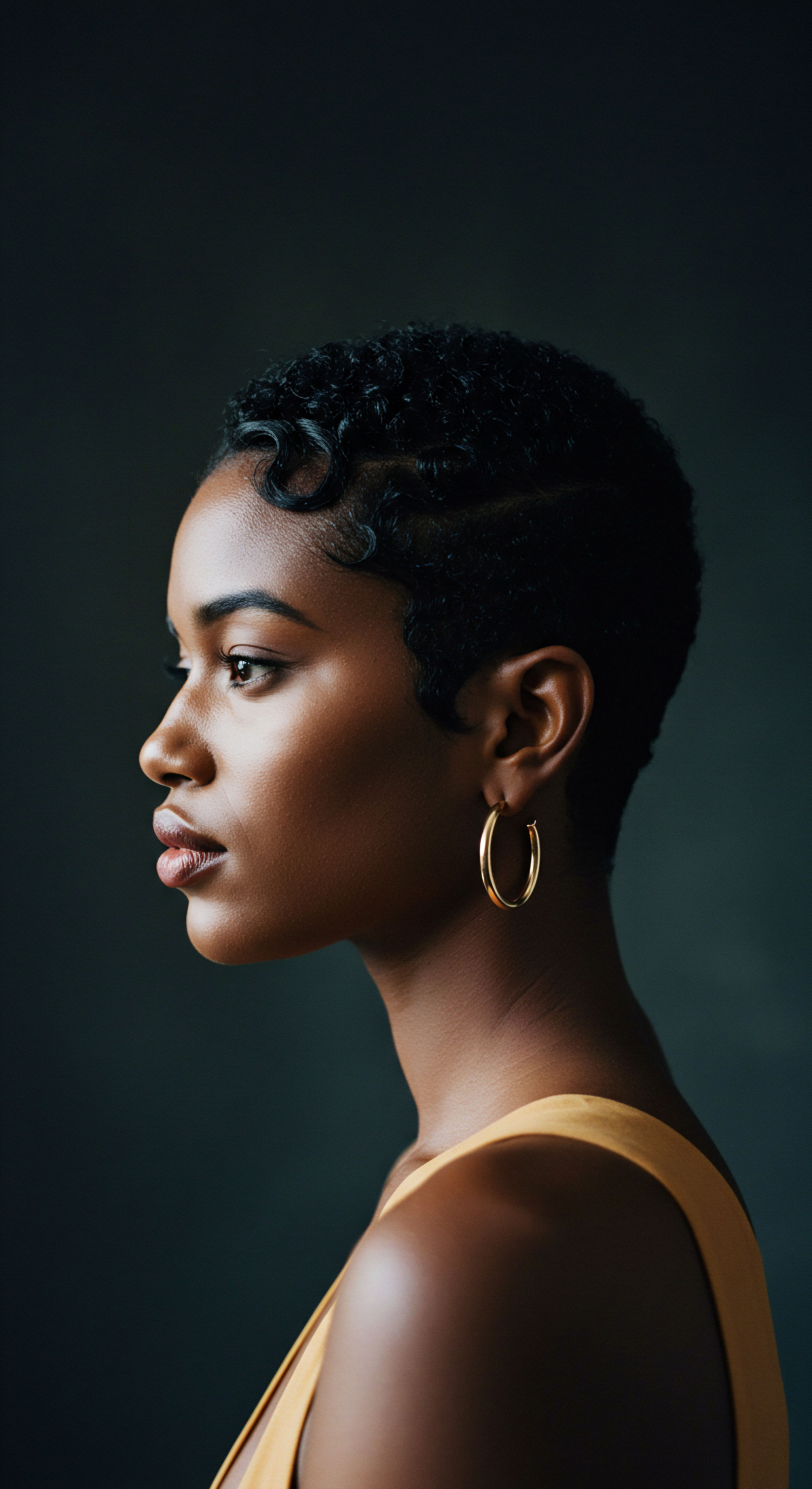
Environmental Factors and Porosity’s Shifting Sands
Beyond genetics, external elements play a significant role in altering porosity over time. Chemical treatments, such as relaxers, perms, and even color processing, intentionally lift the cuticle to alter the hair’s internal structure, invariably increasing porosity. Similarly, excessive heat styling, through blow dryers, flat irons, or curling wands, can cause irreversible damage to the cuticle, leaving it permanently raised and the hair highly porous.
Even seemingly benign factors, like water quality, can influence hair’s porosity. Hard water, rich in mineral deposits like calcium and magnesium, can accumulate on the hair shaft. This mineral buildup can prevent moisture from entering the cuticle, mimicking low porosity symptoms, or it can roughen the cuticle, leading to increased porosity over time. Understanding these external influences allows for a more comprehensive and preventative approach to hair care, moving beyond mere product selection to a broader consideration of lifestyle and environment.
| Factor Chemical Treatments |
| Impact on Porosity Increases porosity by lifting cuticle. |
| Care Strategy Intensive protein treatments, deep conditioning, protective styling. |
| Factor Heat Styling |
| Impact on Porosity Increases porosity, can cause irreversible cuticle damage. |
| Care Strategy Heat protectants, minimal heat, air drying, low-heat settings. |
| Factor Mechanical Manipulation |
| Impact on Porosity Can increase porosity through cuticle abrasion. |
| Care Strategy Gentle detangling, low-tension styles, silk/satin accessories. |
| Factor Environmental Exposure |
| Impact on Porosity Sun, wind, pollution can dry out and raise cuticles. |
| Care Strategy UV protection, leave-in conditioners, protective head coverings. |
| Factor Water Hardness |
| Impact on Porosity Mineral buildup can affect moisture penetration. |
| Care Strategy Chelating shampoos, distilled water rinses. |
| Factor Porosity is not static; it responds to both internal and external forces. |

Does Understanding Porosity Shape Cultural Hair Care Practices?
Across various cultures, particularly those with a heritage of textured hair, traditional hair care practices often, perhaps unknowingly, align with the principles of porosity management. Consider the long-standing tradition of oiling the scalp and strands in many African and diasporic communities. While historically attributed to shine or growth, the application of oils like shea butter or coconut oil after washing would have served as an effective sealant for high porosity hair, helping to lock in moisture. Similarly, the practice of braiding or twisting hair for extended periods, a form of protective styling, minimizes mechanical manipulation and exposure to environmental elements, thereby preserving cuticle integrity and preventing an increase in porosity.
These practices, developed through generations of lived experience and observation, offer a compelling demonstration of intuitive porosity care. They reveal a deep, practical wisdom about the hair’s needs, often predating modern scientific explanations. For example, the use of clay washes or specific herbal rinses in some traditions, while not explicitly labeled as porosity-focused, could have provided gentle cleansing and mineral balancing effects that supported healthy cuticle function.
The connection between ancestral wisdom and contemporary science offers a rich perspective. By examining these traditional practices through the lens of porosity, we gain a deeper appreciation for their efficacy and relevance in today’s hair care landscape. It suggests that while the language may be new, the underlying principles of nourishing and protecting textured strands have been understood and honored for centuries.
- Traditional Oiling ❉ Many cultures apply oils after washing, which effectively seals the cuticle, a crucial step for high porosity hair.
- Protective Styles ❉ Braids, twists, and wraps reduce manipulation and exposure, preserving cuticle health and managing porosity.
- Natural Cleansers ❉ Certain herbal or clay washes gently cleanse without stripping, beneficial for maintaining balanced porosity.
This cultural understanding underscores that the science of porosity is not a cold, clinical concept, but a living truth, reflected in the daily rhythms and generational knowledge of textured hair care.

Reflection
The journey into porosity unveils more than just a scientific principle; it reveals a profound connection to the very essence of textured hair. It is a quiet invitation to listen, to observe, and to respond with genuine understanding. This knowledge, once embraced, ceases to be a mere fact and transforms into a guiding light, allowing for a more harmonious relationship with our strands, celebrating their resilience and their unique story.

References
- Khumalo, Ncoza C. et al. “The African hair fiber ❉ a review.” Journal of Cosmetic Dermatology 8.3 (2009) ❉ 198-207.
- Jachowicz, J. D. and M. L. E. Lang. “Hair ❉ Science and Technology.” Marcel Dekker, Inc. 2004.
- Robbins, Clarence R. “Chemical and Physical Behavior of Human Hair.” Springer, 2012.
- Wortmann, F. J. “Hair ❉ Biology, Chemistry, and Care.” CRC Press, 2018.
- Goren, Andy. “Hair ❉ Its Structure and Functions.” Dermatologic Clinics 13.4 (1995) ❉ 555-562.
- Franbourg, A. et al. “Hair structure and properties.” International Journal of Cosmetic Science 22.1 (2000) ❉ 21-34.
- Gavazzoni Dias, Maria Fernanda. “Hair Cosmetics ❉ An Overview.” International Journal of Trichology 7.1 (2015) ❉ 2-15.